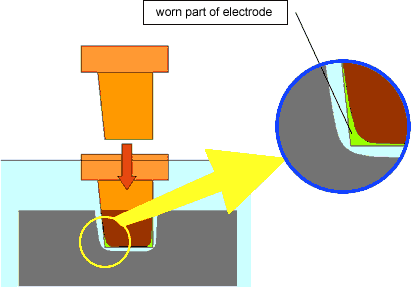Graphite Electrode Vs Copper Electrode
The final word is yet to be out on which material out of Graphite and Copper serves as better electrode material in EDM and EDM electrode machining. It is interesting to note that US users tend to prefer graphite while their Asian and European fabrication counterparts have Copper as the EDM electrode materials of choice.
Factors to Consider
It would help if you compared the properties of copper and graphite electrodes before being able to assess the suitability of both as EDM electrode materials. They are as follows:
1. Material Variety
Graphite comes with a wide variety of characteristics of the material, which let you suit the EDM's particular application with the electrode properties.
2. Cost
Copper is relatively cheap and recyclable too. In contrast, Graphite is considered a specialty material and typically costs more besides not being as recyclable as Copper. You can, however, come across several inexpensive graphites in low-quality EDM grades. Some cost-related data to consider as per a recent normal industry quote for a simple electrode blank with a ground finish on the top and bottom are as follows:
- Copper- $4.68/inch3
- Graphite- $6.80/inch3
With the addition of machining a simple, finished electrode made the quotes rose up to:
- Graphite- $15.50 each
- Copper- $95 each
3. Detail
While considering the case for Graphite vs Copper electrode material in EDM applications, you should keep in mind that EDM typically results in high levels of electricity concentration at the sharp edges and corners. That makes Copper with its low melting point unsuitable for situations where the current density is going to be high. In this case, Graphite has a significant edge over Copper as the material used in EDM machines.
Some figures you want to consider before making an enlightened choice are as follows:
- Graphite electrodes account for 95% of all EDM Electrodes in the US
- In Europe Graphite is used for 75% of all electrode machining uses
- In Asia, Copper is the electrode material of choice with 55% usage
Copper Vs Graphite electrode EDM in Terms of Performance
In terms of performance, these are the advantages and disadvantages of Graphite over Copper as an EDM electrode material:
- Metal Removal Rates
Due to the two substances' thermophysical properties and the method through which EDM works, graphite-based electrodes produce the metal cutting spark at much lower temperatures than copper. The lower temperature means that the amount of electrode burned away due to the process is lower besides a higher metal removal rate.
- Wear
Due to the nature of the EDM process, the high amperes involved besides the roughing and replating that comes with it, end up helping graphite electrodes maintain themselves. At the same time, their copper counterparts erode in the same conditions.
On the flip side, graphite electrode wears faster than copper during the finishing stages of the EDM cut characterized by low-amperes and short periods of being switched on. We should, however, take into account the fact that in such finishing stages the actual wear is negligible if not immeasurable.

Some facts to consider in this topic are as follows:
- Graphite has electrode wear of less than 1%
- The melting point of most metals is 1500oC while Copper has a melting temperature of 1100°C. This results in far more wear than its Graphite counterparts.
- Surface Finish
Due to the low porosity of Copper as a solid material, the surface finishes than can be achieved through their use are fine indeed. Graphite electrodes can also provide almost the same amount of fineness, but you will have to use EDM sinker technology to achieve the same.
Final Thoughts-
It is not without reason that in the world's leading economy- the United States, Graphite accounts for 95 percent of electrodes. With emerging technology that facilitates Graphite electrodes, it is all set to dominate over Asian and European markets too!

Comments